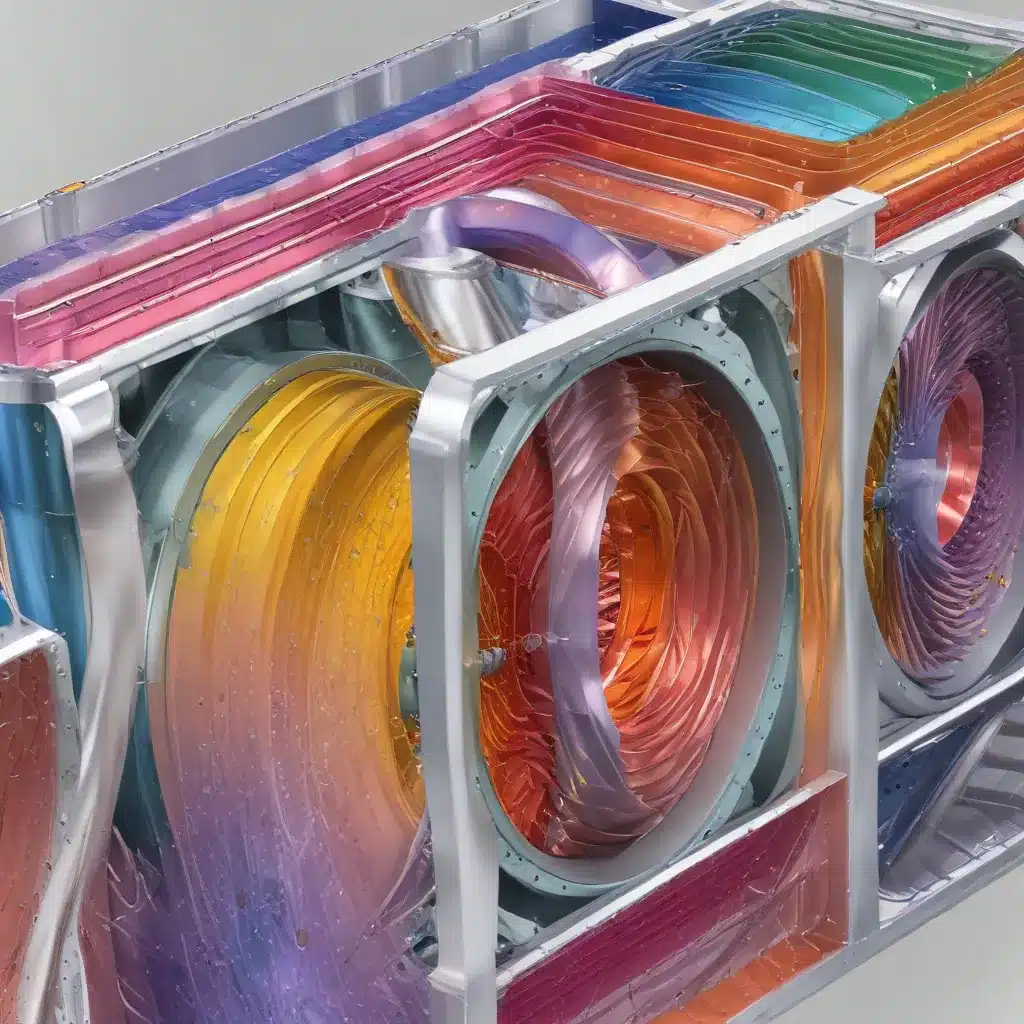
As a seasoned expert in air-cooled heat exchangers, I’m excited to share practical tips and in-depth insights on how multiphysics simulation can optimize the performance of these critical thermal management systems. Air-cooled heat exchangers play a pivotal role across industries, from power generation and heavy manufacturing to the burgeoning electric vehicle (EV) market. By leveraging advanced simulation techniques, engineers can unlock new levels of efficiency, reliability, and cost-effectiveness in air-cooled heat exchanger design and operation.
Tackling Thermal Challenges with Multiphysics Modeling
One of the primary challenges in air-cooled heat exchanger design is managing the complex thermal interactions between the solid components (e.g., fins, tubes) and the surrounding airflow. Factors such as fin geometry, material properties, and airflow patterns can significantly impact heat transfer performance and overall system efficiency. Traditional analytical methods often fall short in capturing these multiphysics phenomena, leading to suboptimal designs or unexpected performance issues.
This is where multiphysics simulation shines. By integrating computational fluid dynamics (CFD), heat transfer, and structural analysis within a unified modeling framework, engineers can gain a comprehensive understanding of air-cooled heat exchanger behavior. ANSYS FLUENT, for example, allows for detailed simulations that account for the coupling between fluid flow, heat transfer, and even structural deformation – providing a powerful tool for optimizing design and performance.
Optimizing Air-Cooled Heat Exchanger Design
One notable application of multiphysics simulation is in the design optimization of air-cooled heat exchangers. Let’s consider the case of a battery cooling system for an electric vehicle, as described in the resolvent case study.
High temperatures can quickly degrade battery performance and even lead to thermal runaway, compromising both safety and efficiency. Effective cooling is essential to maintain the battery within its optimal operating temperature range. By leveraging a conjugate heat transfer analysis in COMSOL Multiphysics, the team at resolvent was able to simulate the air cooling of a battery module, identifying the optimal airflow rate and heat sink (standoff) design to keep the battery cells below a critical temperature threshold.
The workflow involved:
-
Modeling the Solid-Fluid Interfaces: The air cooling of the battery module was simulated using a conjugate heat transfer analysis, which models the heat transfer between the solid battery components and the surrounding airflow. This allowed the team to accurately capture the thermal energy exchange at the interfaces.
-
Optimizing the Standoff Design: The analysis focused on optimizing the design of the standoff (heat sink) by varying the number of fins and the spacing between them. The standoff size was constrained by the available space in the battery module.
-
Calculating Flow Requirements: The CFD analysis provided insights into the flow requirements and associated pressure drop for the different standoff designs. This information was crucial for selecting a cooling fan that could deliver the necessary airflow and static pressure.
-
Iterating on Design and Performance: The simulation results, including the temperature distribution within the battery cells and the pressure drop in the system, were used to refine the standoff design and ensure the cooling system met the performance targets.
By leveraging this multiphysics approach, the resolvent team was able to collaborate effectively with Nerve Smart Systems, providing valuable insights that guided the development of their innovative battery cooling solution. The ability to simulate the complex thermal-fluid interactions and optimize the design iteratively proved instrumental in achieving the desired performance and safety goals.
Enhancing Air-Cooled Heat Exchanger Maintenance and Optimization
Multiphysics simulation is not only valuable for the initial design of air-cooled heat exchangers but also for assessing their ongoing performance and guiding maintenance strategies. EVAPCO Dry Cooling, for example, utilizes state-of-the-art simulation tools from ANSYS to analyze the airside and steamside performance of their air-cooled steam condensers (ACCs).
By modeling the complex flow and heat transfer phenomena within these large-scale industrial systems, EVAPCO’s engineers can:
-
Diagnose Performance Issues: Simulation models can help identify the root causes of performance degradation, such as fouling, air recirculation, or suboptimal fan operation, enabling targeted maintenance and optimization strategies.
-
Optimize Operational Parameters: The models can be used to explore the impact of parameters like airflow rate, fan speed, and ambient conditions on the ACC’s thermal and hydraulic performance, allowing for proactive adjustments to maintain optimal efficiency.
-
Evaluate Retrofit and Upgrade Options: Simulation can also play a crucial role in assessing the potential benefits of retrofitting or upgrading existing air-cooled heat exchangers, guiding investment decisions and ensuring the desired performance improvements are achieved.
Moreover, EVAPCO’s strong relationships with key suppliers enable them to provide cost-effective spare parts for air-cooled heat exchangers, regardless of the original equipment manufacturer. This comprehensive approach to service and support ensures that their customers can maximize the lifespan and performance of their critical thermal management assets.
Unlocking the Full Potential of Air-Cooled Heat Exchangers
As the demand for efficient and sustainable thermal management solutions continues to grow, the role of multiphysics simulation in air-cooled heat exchanger design and optimization becomes increasingly vital. By capturing the complex interplay of fluid dynamics, heat transfer, and structural mechanics, engineers can unlock new levels of performance, reliability, and cost-effectiveness in these versatile heat exchange systems.
Whether you’re designing a state-of-the-art battery cooling system, optimizing the operation of an industrial air-cooled steam condenser, or seeking to extend the life of your existing air-cooled heat exchangers, leveraging multiphysics simulation can be a game-changer. By collaborating with experienced practitioners and tapping into the latest simulation technologies, you can elevate your air-cooled heat exchanger systems to new heights of efficiency and reliability.
To learn more about how https://www.aircooledheatexchangers.net/ can support your air-cooled heat exchanger projects, please don’t hesitate to reach out. Our team of seasoned experts is here to provide practical guidance and customized solutions to optimize your thermal management systems.

